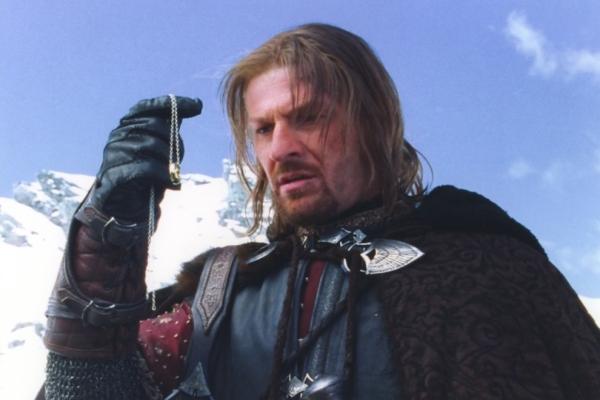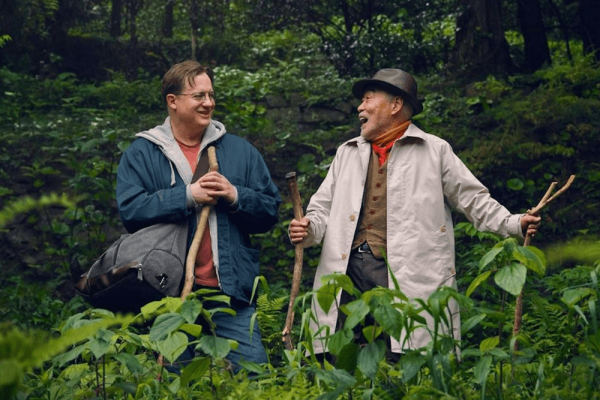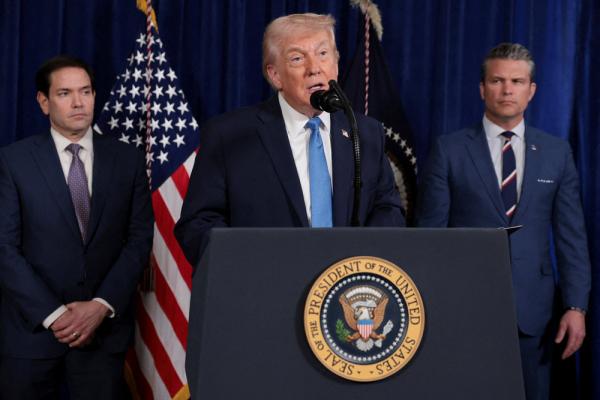There’s a moment in the astonishing new film The Last Black Man in San Francisco, when two men sit at a bus stop, responding to a group of tourists riding on one of those open-sided trolley cars that facilitate drinking and shouting alongside sightseeing. Drinking and shouting appear to be all that’s happening on the trolley car, and one of the men at the bus stop remarks on how the city has gone downhill. It’s a familiar scene, and we’ve probably all said similar things. The difference here is that the man complaining about the city’s decline is entirely naked. The shame is supposed to fall not on the naked man, but on the viewer — the man is a kind of elder, immersed in the city long enough to have earned the right to both “own” his place there, and to judge the encroachment of others. If he’s willing to be vulnerable enough to walk around without armor, the least we can do is pay attention to his complaint.
That complaint is the heart of what’s going on in The Last Black Man in San Francisco, a film of operatic intensity, poetic emotion, political clarity, and a touch of magic realism. The feature debut of childhood friends co-writer/director Joe Talbot, and actor Jimmie Fails is a fully formed, spiritually mature movie that captivated me with a sense of tragedy and beauty and hope all at once. (Emile Mosseri’s elevating music and the radiant cinematography by Adam Newport-Berra are indelible, too.)
Fails plays a character (named after himself) restoring the house he grew up in, without the consent of its current owners, though it’s definitely for the common good. He’s rooted in the place he knows best, and aims to overcome the principalities and powers embodied in gentrification, particularly how the disproportionate lack of financial equity in the black community is weaponized when “property” is defined without reference to ties to the land or its stewardship. In other words, when the right to “home” depends solely on unregulated market forces, rather than relationships. Jimmie’s father “lost the house” (which must be called out as a euphemism for “the system took the house from him”), and it’s now on the market for $4 million.
Jimmie and his friend Mont (Jonathan Majors, deliciously kind and offbeat), orbit around Mont’s Grandpa, played by the ever-welcome Danny Glover, as he does in real life representing elderhood and the need to hold onto ancient wisdom in times of transition. The affection the two friends have for the city, for each other, for the house, is palpable. The movie isn’t just about making a building pretty again — it’s about Love. About stretching yourself to allow something beautiful to flourish — it cares about the first green shoots of a fragile plant in the middle of some asphalt, or why someone would write a note with a fountain pen rather than send a text. And even though it knows that fighting gentrification may be a losing battle for now, The Last Black Man in San Francisco is absolutely clear that the fight isn’t merely about winning.
Those willing to respond to pressures that could degrade their own homes, their own dignity — those who answer the receding of light with the insistence on burning candles everywhere — they are the ones who truly live.
And so the poetry of this movie goes: Two men skateboarding down a steep city street as if it were a deep dive into Wonder; A man meeting his (estranged?) mother on a bus, and smiling; Someone trying to hold back the tsunami of industrialized selfishness by putting on a play in an attic. Activism for a better world has always been romantic, for to want the world to change, you must love it first. Love it enough to want to stay in it, despite the decay, despite the cracks and the ugliness and the ways we hurt each other. That love can stimulate a vision of the life we could have.
The folks who made The Last Black Man in San Francisco want to help their beloved city be less than a factory and more than a hotel, but their real ambition is higher than that. They want more love in the world.
PS: The One Percent has a new meaning in San Francisco: By one measure it’s the proportion of the city’s residents now defined as “homeless.” It’s a staggering figure, when you think about it— one in every hundred people living outside, or otherwise without a permanent place to be; in a city that seeks to be seen as a world leader in technological progress, the aesthetic cutting edge, and human inclusion. Of course those things are all true as well. I wouldn’t be typing this with such ease if it weren’t for Silicon Valley, the literary and musical and cinematic culture of the Bay Area has given rise to some of the great works of imagination, and of course San Francisco was a pioneer in the public humanization of historically excluded people. And pretty much any urban area could learn from the Mission District, where you can find offerings of free food, clothing, books, furniture, and whatnot on many street corners. People are struggling in San Francisco, people are thriving in San Francisco, San Francisco is still figuring itself out. The Last Black Man in San Francisco isn’t a roadmap, but a love letter that could help the city remember itself.
Got something to say about what you're reading? We value your feedback!







